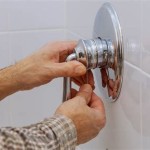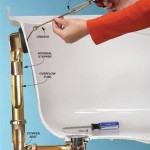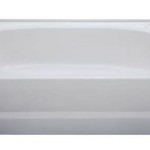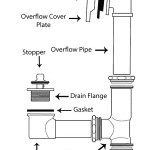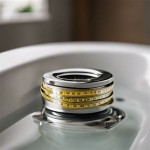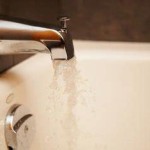How Do You Unstick a Bathtub Faucet?
A stuck bathtub faucet can be a frustrating problem, making it difficult to control water flow and temperature. This can be caused by various factors, including mineral deposits, corrosion, or worn-out parts. Fortunately, many stuck bathtub faucets can be fixed with some simple tools and techniques. This article will guide you through the process of unsticking a bathtub faucet and addressing the underlying cause of the issue.
Understanding Why a Bathtub Faucet Gets Stuck
Before attempting to fix a stuck bathtub faucet, it's essential to understand the possible causes. This will help you diagnose the problem effectively and choose the appropriate solution. Here are some common reasons why a bathtub faucet might stick:
- Mineral Deposits: Over time, hard water can leave mineral deposits on faucet components, obstructing the smooth operation of the valve stem. This build-up can make it difficult to turn the handle.
- Corrosion: Exposure to moisture can lead to corrosion on the faucet's internal parts, especially the valve stem. This corrosion can cause the stem to stick or seize up.
- Worn-Out Parts: The internal parts of a bathtub faucet, such as O-rings, washers, and valve seats, can wear out over time. This wear can lead to leaks and eventually cause the faucet to stick.
- Foreign Objects: Small objects, like debris or hair, can occasionally get lodged inside the faucet mechanism, hindering its proper operation.
By identifying the root cause, you can take the necessary steps to address the problem appropriately.
Methods for Unsticking a Bathtub Faucet
Once you've identified the potential cause of the stuck faucet, you can attempt to unstick it using these methods:
1. Cleaning Mineral Deposits
If mineral deposits are the culprit, you can try to remove them with a cleaning solution. Here's how:
- Turn off the water supply: Locate the shut-off valve for your bathtub and turn it off. This will prevent water from flowing while you work on the faucet.
- Remove the faucet handle: Most bathtub faucets have a screw or a clip that secures the handle. Use a screwdriver or a tool to release the handle and remove it.
- Apply a cleaning solution: Apply a commercial descaler or a mixture of vinegar and water to the exposed faucet mechanism. Let it sit for several minutes to loosen the mineral deposits.
- Scrub gently: Use a soft-bristled brush or a toothbrush to scrub the mineral deposits. Be careful not to damage the faucet parts.
- Rinse thoroughly: Once you've removed the deposits, rinse the faucet mechanism with clean water.
- Reassemble the faucet: Carefully reattach the handle and turn the water supply back on. Test the faucet for smooth operation.
2. Lubricating the Faucet
If corrosion is the issue, lubricating the faucet can help restore its smooth operation. Follow these steps:
- Turn off the water supply: Ensure the water supply to the bathtub is shut off.
- Remove the faucet handle: Remove the handle as described in the previous method.
- Apply lubricant: Use a silicone-based lubricant or a specialized faucet lubricant and apply it to the valve stem and any other moving parts.
- Turn the faucet handle: Try to turn the handle back and forth to distribute the lubricant.
- Reassemble the faucet: Replace the handle and turn the water supply back on.
If the faucet remains stuck after lubrication, you might need to consider replacing worn-out parts.
Addressing Worn-Out Parts
If the faucet still sticks and the problem persists, it's likely that one or more internal parts are worn out. Replacing these parts may be necessary to restore proper function.
To replace worn-out parts, you'll need to disassemble the faucet. This process may vary depending on the faucet model and design. It's essential to carefully follow the manufacturer's instructions or seek help from a plumber if you're not comfortable working with plumbing fixtures.
Once you have disassembled the faucet, inspect the internal parts for signs of wear and tear. Replace any damaged or worn-out parts with new, compatible replacements. After installing the new parts, reassemble the faucet and test its functionality.
If you encounter any difficulties or are unsure about the repair process, it's best to consult with a qualified plumber. They have the expertise and tools to diagnose and repair complex plumbing problems.

How To Fix A Leaking Bathtub Faucet Diy Family Handyman

How To Free A Stuck Shower Faucet Spout

Diy How To Fix Shower Tub Stuck Spout Vinegar Diverter Bathtub

How To Fix A Leaky Bathtub Faucet 6 Ways Stop Drips

How To Fix A Leaking Bathtub Faucet The Home Depot

How To Fix A Leaking Bathtub Faucet The Home Depot

How To Fix A Leaking Bathtub Faucet Diy Family Handyman

How To Fix A Leaky Bathtub Faucet

How To Fix A Leaky Bathtub Faucet 6 Ways Stop Drips

How To Fix A Stuck Bathtub Spout Leaking
Related Posts

